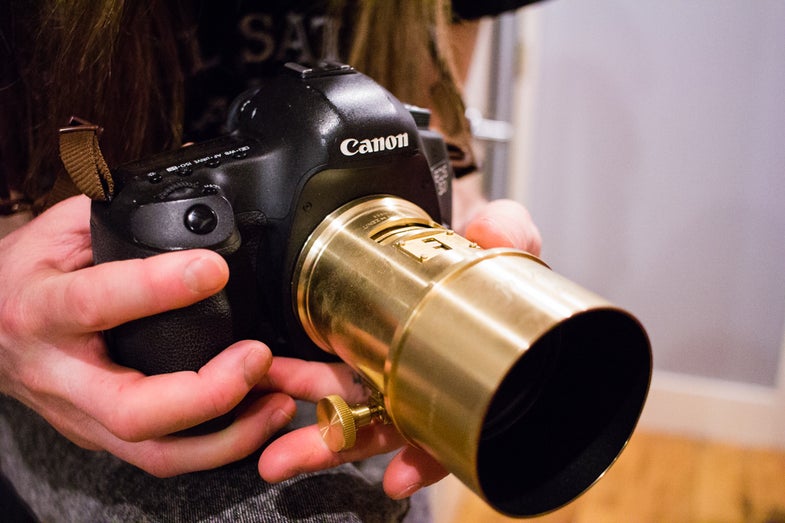Hands On: Lomography’s Petzval Lens
We spent some quality time with this updated take on an 1840s portrait lens

We may earn revenue from the products available on this page and participate in affiliate programs. Learn more ›
The lenses that we typically write about on Pop Photo are examples of cutting edge photo technology. They feature sophisticated image stabilization systems, lens coatings that prevent smudges, low levels of distortion and super speedy autofocus. Although we love those high tech lenses, we still have love for gear that reminds us of photography’s roots, and Lomography’s Petzval lens does just that.
This 85mm f/2.2 portrait lens is based off of a Petzval lens design from 1840, but with funds raised through Kickstarter, Lomography updated this classic design to work with Canon and Nikon cameras SLR cameras. The Petzval is known for creating images that are perfectly sharp in the center of the frame with a lovely circular bokeh effect that becomes more intense as you get closer to the edges of the frame.
The Petzval lens feels large in your hand, but when it was mounted to a Canon 5D Mark III the weight of the lens balanced quite nicely with the that of the camera. The Petzval has a drop-in aperture system and so each lens comes with a selection of metal plates with specifically sized circles. The larger the circle on the plate the larger your aperture opening. The Petzval comes with plates for f/2.2, f/2.8, f/4, f/5.6, f/8,f/11 and f/16 and a handful of non-circular apertures such as a star, a hexagon and a teardrop. You can also shoot without a drop in plate, which will increase the circular bokeh effect on your images—this is often how I chose to shoot with the Petzval.
Although the lens is designed to be comparable with DSLRs the Petzval has no electrical contacts, so it won’t be able to communicate with your camera system the way more modern lenses do. This means you won’t see an automatic stop down in your viewfinder, so you need to pay close attention to your exposures.
Focusing the Petzval is done with a small crank knob on the bottom of the lens. I found this crank knob focusing system a bit finicky at first, the smallest movements seemed to knock the center of my images out of focus, leaving me with unwanted blur instead of pretty circular bokeh. It took a while, but eventually I was able to figure out the nuances of the focusing system and start creating images that achieved the “Petzval” look I was going for.
The brass Petzval that we shot with can be purchased from Lomography for $599 for either Canon or Nikon mounts or in a subtle black for $699. Both colors come with the seven standard aperture plates (the star, hexagon and teardrop can be purchased for an additional $24.90). Like most Lomography products, the packaging of the Petzval is beautiful. The lens comes in a sturdy box and is paired with a mini-book that features a number of beautiful pictures shot with the lens and explains its importance of the history.
Check out our sample image gallery to see some of the favorites from our time shooting with the Petzval.

Petzval Lens

Petzval Lens

Petzval Lens

Petzval Lens

Petzval Lens

Petzval Lens

Petzval Lens

Petzval Lens

Petzval Lens

Petzval Lens

Petzval Lens

Petzval Lens

Petzval Lens

Petzval Lens

Petzval Lens

Petzval Lens

Petzval Lens

Petzval Lens
